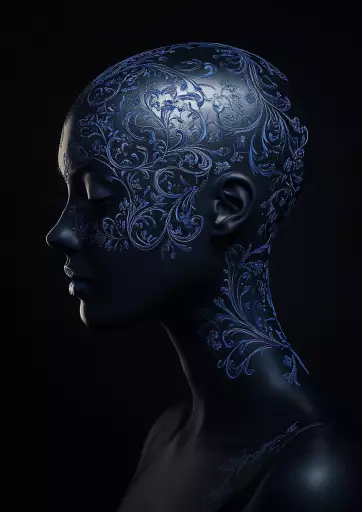Explore the Best AI Image Gallery

Capturing the Invisible: How AI is Revolutionizing Product Photography
Product photography has always been a crucial element in e-commerce and marketing. High-quality images can make or break a sale, influencing consumer perception and purchase decisions. Traditionally, this process involved meticulous set design, skilled photographers, and often, post-production editing to achieve the desired results. However, the advent of artificial intelligence (AI) is rapidly changing the landscape of product photography, ushering in a new era of efficiency, creativity, and accessibility.
From generating realistic product images to automating tedious tasks, AI is empowering businesses and individuals alike to elevate their visual content.
Applications of AI in Product Photography
- Image Generation: AI-powered tools can create stunning product images from scratch based on textual descriptions or sketches. This eliminates the need for physical products or complex studio setups, allowing for quick and cost-effective image creation.
- Style Transfer: AI algorithms can transfer the artistic style of one image onto another, enabling photographers to experiment with different aesthetics and create unique visuals.
- Background Removal and Replacement: AI can automatically identify and remove backgrounds from product images, allowing for seamless integration into various marketing materials or online platforms.
- 360-Degree Imaging: AI-powered software can generate immersive 360-degree product views, providing customers with a comprehensive understanding of the product from all angles.
- Image Enhancement and Retouching: AI algorithms can automatically enhance image quality, remove blemishes, and adjust lighting to create professional-looking visuals.
The Creative Potential of AI in Product Photography
Beyond its practical applications, AI is also opening up exciting new creative possibilities for product photographers. By harnessing the power of algorithms, artists can explore innovative concepts, experiment with unconventional styles, and push the boundaries of visual storytelling.
Imagine AI-generated product images that blend fantasy with reality, showcasing products in surreal environments or interacting with fantastical elements. Or consider AI-powered tools that allow photographers to manipulate time and motion within product shots, creating dynamic and captivating visuals. These are just a few examples of how AI is empowering creatives to explore uncharted territories in product photography.
Ethical Considerations
While the potential of AI in product photography is undeniable, its crucial to address the ethical considerations that arise with its use.
- Transparency and Disclosure: Its essential to be transparent about the use of AI in creating product images. Consumers should be informed when AI has been employed to generate or manipulate visuals.
- Bias and Fairness: AI algorithms can sometimes perpetuate existing biases, leading to unfair or discriminatory representations in product photography. Its important to ensure that AI tools are developed and used responsibly to avoid amplifying societal inequalities.
- Job Displacement: The automation capabilities of AI may raise concerns about job displacement in the photography industry. While AI can streamline certain tasks, its unlikely to fully replace human creativity and expertise.
Future Trends
The field of AI in product photography is constantly evolving, with new advancements and applications emerging regularly. Some key trends to watch for include:
- Increased Personalization: AI will enable the creation of highly personalized product images tailored to individual customer preferences and demographics.
- Interactive Product Experiences: AI-powered tools will allow consumers to interact with product images in new and engaging ways, such as virtually trying on clothes or assembling furniture digitally.
- Real-Time Image Generation: AI will become capable of generating product images in real time, allowing for dynamic and responsive visual content creation.
As AI technology continues to advance, its impact on product photography will only become more profound. By embracing the possibilities while addressing the ethical challenges, businesses and creatives can harness the power of AI to capture the invisible, tell compelling stories, and create truly captivating visual experiences.














](https://images.ai-img.art/thumbnails/150/f9584153b4cddd8c9fab611dc10247549b275c59bc173251e37d0935874f9deb.webp)

](https://images.ai-img.art/thumbnails/150/bddf3ae4a232290858389b933c866ad3be429ef2e25c23a9f4d7713ed6e44d0b.webp)

](https://images.ai-img.art/thumbnails/150/4289d1230b86a96c4d556636c3167bed0ef38f850826549517e4e45db4d87bf7.webp)



](https://images.ai-img.art/thumbnails/150/f67d9af3398150f2ab1bcf250717fea134275e2ca896252b54a4d9bb3719f9ac.webp)

](https://images.ai-img.art/thumbnails/150/008b5d5d49667cc2e93a5f8a8adfaa545963da99c39ff0901f5296294636400d.webp)
](https://images.ai-img.art/thumbnails/150/c2c9c48b38fae37f0a457b80b084ed01ba803810fc8f488c8f610c03abc74049.webp)















